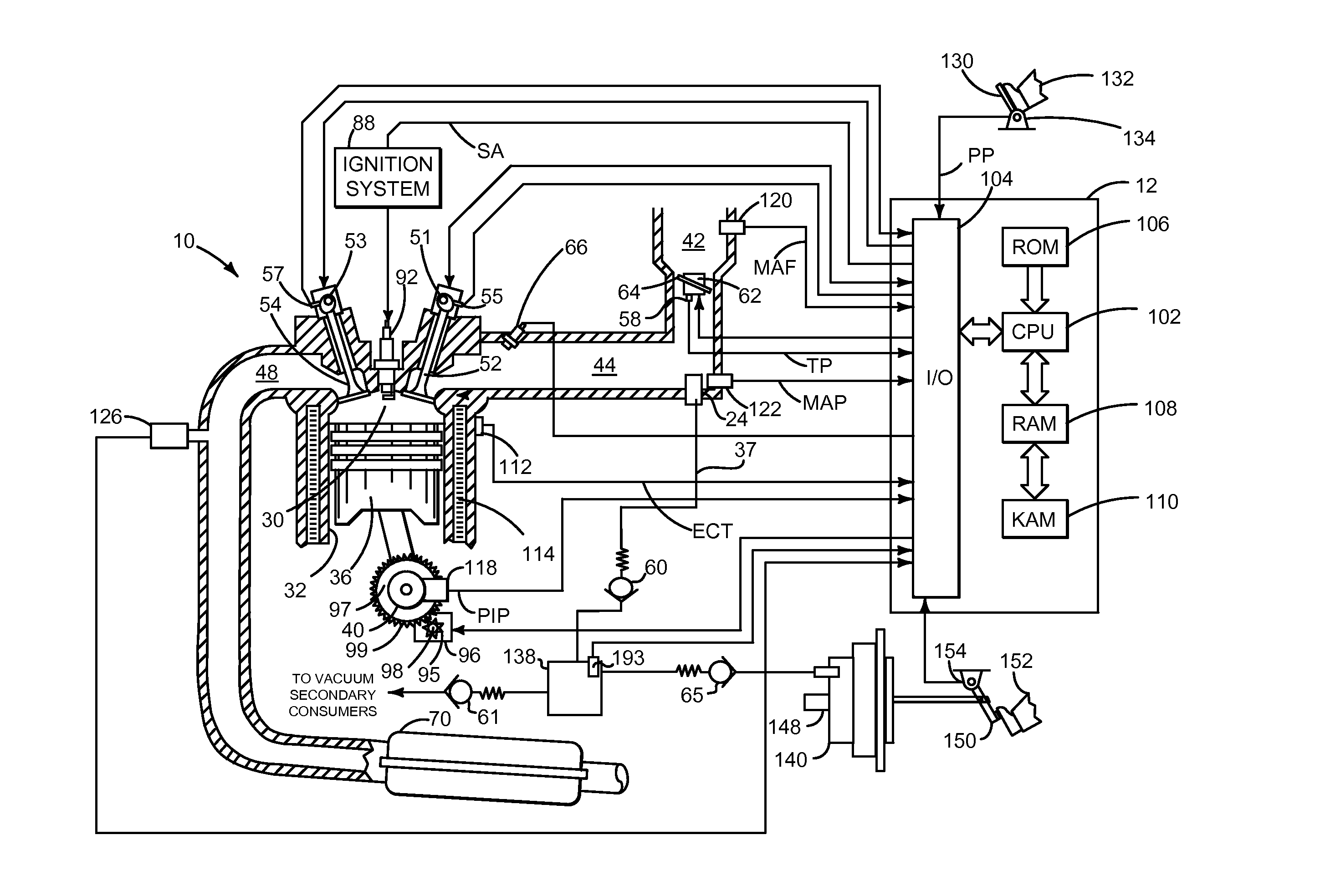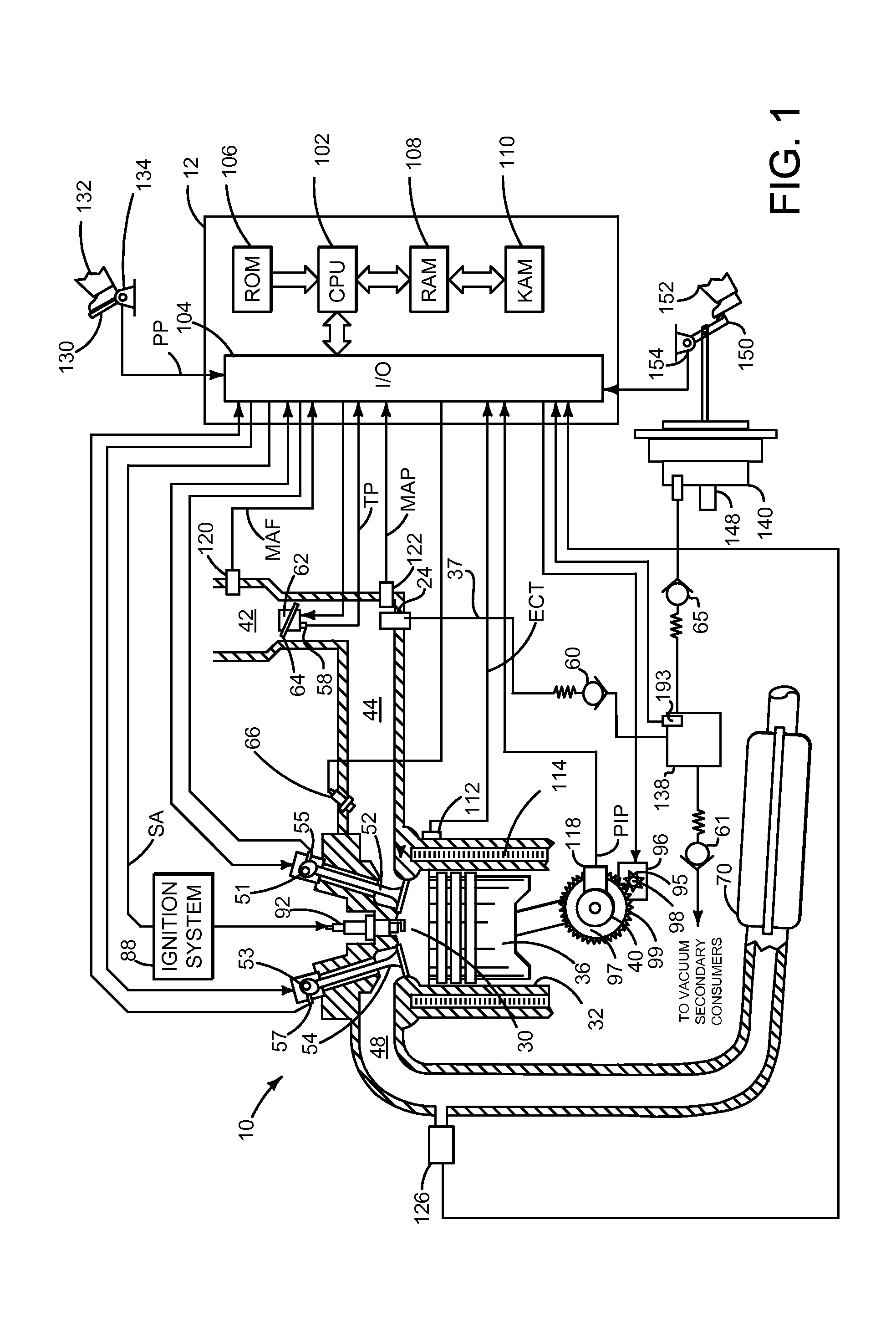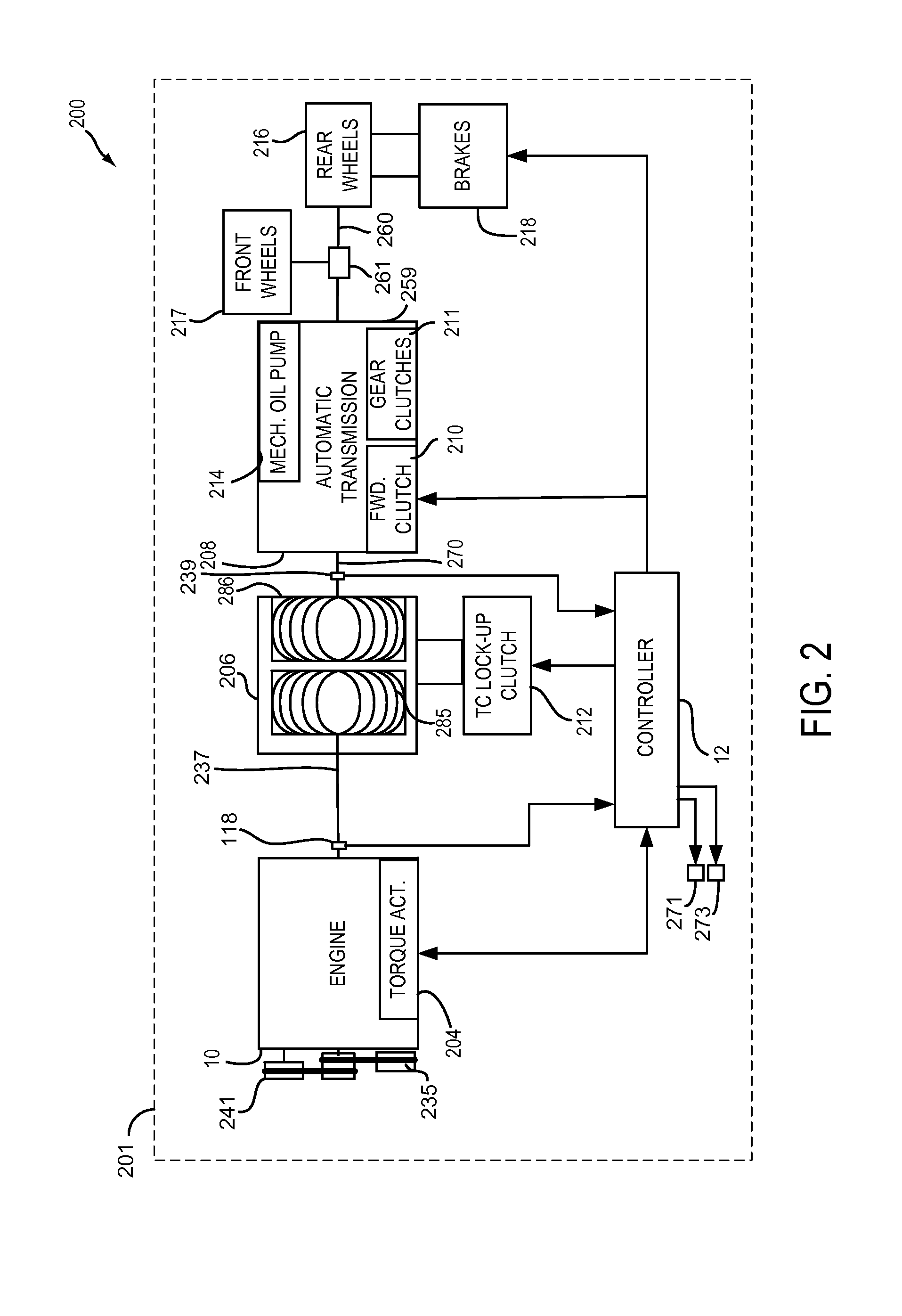Method and system for providing vacuum for a vehicle
a technology for vacuuming and vehicles, applied in the direction of machines/engines, electric control, speed sensing governors, etc., can solve the problems of shedding loads, not always being able to reduce engine load, and difficulty in providing as much vacuum as is desired by the engine, so as to improve the vacuum generated by the engine, increase the force, and reduce the load.
- Summary
- Abstract
- Description
- Claims
- Application Information
AI Technical Summary
Benefits of technology
Problems solved by technology
Method used
Image
Examples
Embodiment Construction
[0014]The present description is related to controlling a vehicle powertrain. The vehicle may include an engine and transmission as is shown in FIGS. 1-2. The engine may include engine speed dependent devices that apply load to the engine and provide ancillary functions. Loads applied to the engine via the engine speed dependent devices and engine speed and may be controlled as shown in FIG. 4 according to the method illustrated in the flowchart of FIGS. 5 and 6.
[0015]Referring to FIG. 1, internal combustion engine 10, comprising a plurality of cylinders, one cylinder of which is shown in FIG. 1, is controlled by electronic engine controller 12. Engine 10 includes combustion chamber 30 and cylinder walls 32 with piston 36 positioned therein and connected to crankshaft 40. Flywheel 97 and ring gear 99 are coupled to crankshaft 40. Starter 96 includes pinion shaft 98 and pinion gear 95. Pinion shaft 98 may selectively advance pinion gear 95 to engage ring gear 99. Starter 96 may be di...
PUM
 Login to View More
Login to View More Abstract
Description
Claims
Application Information
 Login to View More
Login to View More - R&D
- Intellectual Property
- Life Sciences
- Materials
- Tech Scout
- Unparalleled Data Quality
- Higher Quality Content
- 60% Fewer Hallucinations
Browse by: Latest US Patents, China's latest patents, Technical Efficacy Thesaurus, Application Domain, Technology Topic, Popular Technical Reports.
© 2025 PatSnap. All rights reserved.Legal|Privacy policy|Modern Slavery Act Transparency Statement|Sitemap|About US| Contact US: help@patsnap.com



